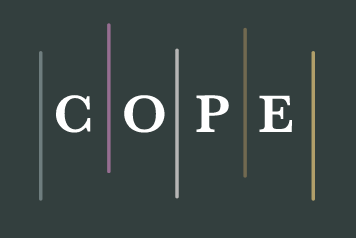Cultural Contexts of the Formation of Science in the Social-Historical Context of Islamic Countries
DOI:
https://doi.org/10.58355/maqolat.v2i4.84Keywords:
Science, Culture, Society, Islam, CognitionAbstract
Positivist definitions of science defined the relationship between culture and science as an external relationship and considered science free from cultural influences. Still, numerous researches and reflections conducted in the field of sociology and philosophy of science show the effective presence of culture in the context of science. By accepting such an influence, postmodern paradigms consider science as a cultural category and explain the relationship between science and culture in a way that leads to absolute epistemological relativity and the production of science under culture. The following article tries to answer the question of whether cultural contexts affected the formation of science in Islamic societies? The research methodology is focused on the common paradigms in the field of the relationship between science and culture with the documentary method and logical reasoning and in the framework of the philosophy of the cultural system and has finally explained the process of how these two influence each other.
Downloads
References
Allameh Hali, H. (1992). Al-Jawhar al-Nazid, Qom: Bidar
Bahrani, S.H. (1955). al-Burhan fi Tafsir al-Qur'an, publisher of Ba'ath Institute
Bergson, H. (1935). The two sources of morality and Religion, By, R.AshleyAudra, andcloudesiey Brerton, Macmillan and cloudesiey Brerton, Macmillan and co., limited st.martin street, London.
Bucchi, M. (2004) .Science in Society: An Introduction to Social Studies of Science, London & New York: Routledge.
Chalmers,Alan F., (2013) . What Is This Thing Called Science?, University of Queensland Press, 2013
Dampier, W.C. (2017). A history of science and its relations with philosophy, Diamond Publisher
Davis, W. (2002). The naked geography of hope. Whole Earth, Spring, 57-61.
Epstein,S.(2008)” Culture and Science/Technology: Rethinking Knowledge,Culture, Materiality, and Nature”, The Annals of American Academy of Political and Social Science.
Glover ,D.& Strawbridge & Sh., Tavakol,M. (2014). The Sociology of Knowledge & Science,Tehran:SAMT.
Golshani,M.(2009).From Secular Science to Religious Science,Tehran:Institute for Humanities and Cultural Studies.
Hasanzadeh Amoli, H. (2021). Ayoun-e Masael Al-Nafs va Surah al-Ayoun Fe Sharh al-Ayoun, Manzomeh Shamsi publisher
Hosseini Al-Hashemi, S. M.(1992).Sociology of Science (first session), Qom, Islamic Sciences Academy.
Hossein Nejad Mohammad Abadi, H. (2008). The relationship between science and Islamic culture and civilization from the point of view of Martyr Motahari, Andisheh Hozha Magazine, No. 60.
Jahanbakhsh ,A.& Sheikh Al-Iraqinzadeh,H.(2019). The relationship between science and culture, the theoretical infrastructure of Islamic civilization, Scientific Journal of New Islamic Civilization Fundamental Studies, 2(1) , 37-64, HTTPS://DOI.ORG/10.22070/NIC.2019.908
James, W. (1980). The Varieties of Religious Experience, London:Longmans, Green and Co. 1980.op.cit.
Krober,A.L & Parsons,T.(1958),The Concepts of Culture and of Social System,The American Sociological Review,No.23,582-3
Khosro Panah, A.H. (2015). Philosophy of Knowledge, Maarif Publishing House
Misbah, M.& Mohammadi, A. (2017). Epistemology, Qom: Publications of Imam Khomeini Educational and Research Institute.
Mohseni, M.(1993). Basics of Sociology of Science: Society, Science and Technology, Tehran: Tahori.
Motahari, M. (2017). issue of recognition,Sadra Publications.
Naraghi, M. M.(2004). Jame Al-Saadat, Najaf, Dar al-Nu'man Lal-Tabaa' and Al-Nashar.
Little,W.(2023), Introduction to Sociology, Canadian Edition.
Parsania, H. (2013). Science and Philosophy, Tehran: Islamic Culture and Thought Research Institute Publishing Organization
Pirouzmand, Al.R. (2012). the fundamental theory in the relationship between religion and culture, Qom, Maarif Publishing House.
Pirouzmand, A. (2019). Foundations and Model of Cultural Engineering, Qom: Academy of Islamic Sciences,54.
Roche, G. (1988). Social Action, translated by Homa Zanjanizadeh, Mashhad, Ferdowsi University.
Rooh El Amini, M. (1995). Basics of Anthropology, Tehran: Attar.125-136.
Roshd Electronic Encyclopedia (www.daneshnameh.roshd.ir)
Salomão ,A.(2023),How Does Culture Influence Science, https://mindthegraph.com/blog/how-does-culture-influence-science
Shapin,S. (1995).Cordelia’s Love:Credibility and the Social Studies of Science ,Perspectives on Science,3(3), 255-275
Shirazi, S.D. (1989). Al-Asfar Arbaa, Beirut: Darahiya al-Trath al-Arabi
Siah Posh,S.A.T. (2013). The position of science in Islamic culture: a review of two theories, Cultural Research Society, Research Institute of Humanities and Cultural Studies, 5(2), 111-132
Sohrvardi, Y. (1993). the collection of the works of Sheikh Ashraq, compiled by Korban, H. Habibi, N. Q.& Nasr, S. H. Tehran: Institute of Cultural Studies and Research
Tabatabai, S.M.H. (1990). Quran in Islam, Qom: Hijra
Velayati, A.A.(2014) .Islamic Culture and Civilization, Qom: Ma'arif Publishing House,.
Vatsyayan,K.(2010), Science And Culture , World Affairs: The Journal of International Issues , Published By: Kapur Surya Foundation, 14(4), 146-171
Zahid, S. S. (2004). About cultural development in Iran, Yas Strategy, (3),81-92
Zahid, S. S., Zahid, S. H. (2013). The epistemological foundations of the new Islamic civilization from the perspective of Allameh Seyed Muniruddin Hosseini Al-Hashemi and his role in the evolution of human sciences, Qom: Kitab Farda.
Zarin Koob, A.H., (2006). Karnameh Ya Islam, Tehran: Amir Kabir Publishing
Downloads
Published
How to Cite
Issue
Section
License
Copyright (c) 2024 Maryam Shamsaei

This work is licensed under a Creative Commons Attribution 4.0 International License.






















